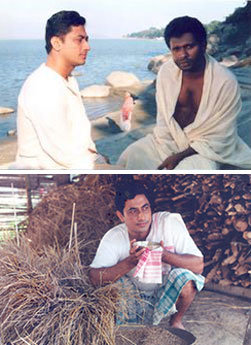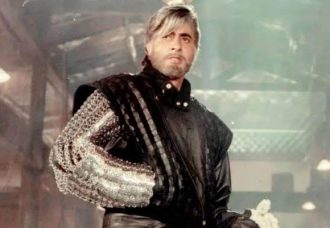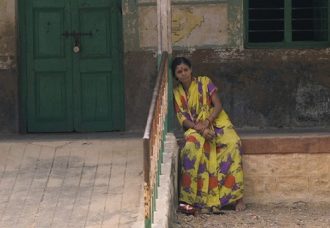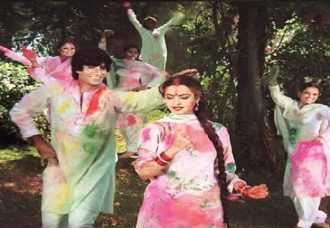In the contemporary time, Shakespeare has been carried across languages and cultures to such an extent that his motifs have become truly universal—they no longer belong to the west alone. A few Assamese filmmakers too have drawn on the immortal characters of Shakespeare in some of their films, but those aspects in the characters remain largely unnoticed and unacknowledged. In the Assamese adaptation of Shakespeare’s plays, filmmakers have localized and culturally contextualized the Shakespearean characters.
The character of Hamlet has been reinterpreted and reassessed globally, and has become an image for all ages. In Assam, the social upheavals, the rise of insurgency, and the massacre of Neeli as a result of the Assam Movement have shattered the dreams of the Assamese youths. As a result, they suffer from moral, emotional and psychological imbalance, and are troubled by the turmoil and changes in their society. At such a critical juncture, a few filmmakers of Assam have made a humble attempt to engage with, to reinterpret and to reassess the character of Hamlet in the present social-political conditions of Assam. Hamlet, for the filmmakers of Assam, has thus become an image—an image of ‘the modern man of Assam, who has angst against the system and is unable to communicate with the world and its peoples’.
Shakespeare came into the literary and cultural discourses of Assam way back in the nineteenth century, but a bit later into its cinematic space.
Similarly, Othello too has been constructed as a narrative tool in the context of Assam to talk of the untold social turmoil and prejudice.
Shakespeare came into the literary and cultural discourses of Assam way back in the nineteenth century, but a bit later into its cinematic space. Initially, Shakespeare’s plays were meant for a select few, but eventually, Assamese playwrights began to add Shakespearean motifs and cultural symbolisms to the local setting. It helped the middle class and lower class audiences of Assam to relate themselves to Shakespeare’s works and his world.
Bhrama Ranga (1888), the Assamese counterpart of Shakespeare’s Comedy of Error (1623), was jointly produced by Ratnadhar Borua (1864-94), Gunjanan Borua (1860-1936), Ghana Shyam Borua (1867-1923) and Ramakanta Borkakoti (1860-1935). It was the first full-scale translation of Shakespeare into an Assamese play, and was well received by the audience. Encouraged by this appreciation, other Assamese playwrights and writers too later began reproducing and reconstructing the Shakespearean plays on Assamese stages on a regular basis. For instance, Lakshminath Bezbarua’s Chakradhvaj Sinha (1923) draws on the character of Shakespeare’s Falstaff, the resonance of Hamlet (1603) and Othello (1603) is seen in Benudhar Rajkhuwa’s Seuti Kiron (1894) Othello was translated as Ranjit Singha (1915) by Sailadhar Rajkhowa, and As You Like it (1599) was translated as Chandravali (1907) by Durgeswar Sarma.
Thus, a fundamental shift from epic, mythological, folkloristic, patriotic and historical themes to Shakespearean themes took place in the narratives of Assamese drama.
In this paper, I have selected one Assamese play—Prasannalal Chowdhury’s Nilambar (1933) and three Assamese films—Hemanta Kumar Das’ Othello (2014), Manju Borah’s Baibhab (1999) and Bidyut Chakarvarty’s Dwaar: The Voyage Out (2013). My focus will be on how Shakespeare’s characters such as Othello and Hamlet have been treated in a new light by situating them in the socio-politico-cultural milieu of Assam.
In Nilambar, King Nilambar is a reverberation of Othello because he is weak and gullible,madly jealous, and irrationally rash in his wrong judgments and actions. Chowdhury has chosen Komotapur, a place in ancient Assam, as the setting of the play. The plot and the characters remain practically the same as that of Shakespeare’s Othello, but they have distinctly Assamese features. Nanda, the lieutenant of Komotapur suffers from a sense of deprivation and believes that he, and not King Nilambur, should be the rightful ruler of Komotapur. It leads him to a conspiracy— he implants a false sense of jealousy in Nilambar, thereupon destroying the king’s relationship with his wife Chandrawali. Nanda, the ultimate dramatic agency of deceit and a shadow of Iago, explains his self-serving intentions in his speech: “the cunningness of the fox, the greedy look of the tiger, the venomous breath of the snake, and the terror of foetus killing—all bundled together in me…” (Act I, Scene IV, Lines 65-66). This echoes the psychology of Shakespeare’s Iago: “I am not what I am” (Act I, Scene I. Line 41). Nanda thoroughly destroys Nilambar’s psychological equilibrium and convinces him that there is something suspicious about Chandrawali’s behaviour with Manuhor, another lieutenant of Komtapur. Although the racial and patriarchal order is absent here, and Nilambar’s marriage already takes place without any parental opposition or elopement, Nilambar emerges as an Othello-like figure because of the sudden transformation of circumstances, which lead to his tragedy. Unlike Shakespeare’s tragic hero Othello as a cultural and racial outsider in Venice, Nilambar is a skilful soldier and leader, and is nonetheless valuable to Komotapur. Prasannalal Chowdhury writes in the preface of his book, “…intentionally or unintentionally…the influence of Shakespeare’s Othello could not be ignored…”(18-08-1933). Nilambar’s fall from grace—he begins as a noble gentleman, an esteemed war hero, a loving husband, and a well-expressed storyteller, and finally turns into an illogical, insanely jealous husband and the cause of his wife Chandrawali’s death—is partially his own fault, the result of free choice, not of an accident or some overriding, evil fate. In fact, the tragedy is triggered by hamartia (trans. ‘error of judgment’). It lies in his flawed understanding of innocent people such as his wife, whom he suspects as being guilty. What makes Nilambar a tragic character is that he realizes his mistakes and his death arouses in us a feeling of pity.
Shakespeare was brought into the cinematic discourse of Assam through Das’ Othello (We Too Have Our Othellos, 2014). With the exception of this film,in the cinematic space of Assam, we get only indirect and oblique representations of Shakespearean themes. Here, I have focused mainly on Othello and have briefly explored the allusive references to Hamlet through some comparatively less popular characters in Assamese cinema.
The Assamese audience can easily identify with the characters Samiran and Dwijendra too, psychologically, emotionally and culturally, as the two reflect the predicament of Shakespeare’s Hamlet.
In Das’s Othello, the Othellos are represented as marginalized and have become the victims of prejudice and outright racism. His cinematic adaptation has changed the whole notion of Othello—a subject of discrimination, and has brought a new dimension to the treatment of this theme. (In Shakespeare’s Othello, we find Roderigo and Iago using racial epithets such as ‘the Moor’, ‘the thick-lips’, ‘an old black ram’, and ‘a Barbary horse’. In fact, Othello is a cultural and racial outsider in Venice.) The settings of Shakespeare’s Othello—Venice and Cyprus, have been replaced by the local settings of Assam in the Assamese narrative. Set at the backdrop of the socio-political milieu of present day Assam, the film Othello narrates the psychological position of characters such as Bankim and Mun who attempt to assimilate into the social order.Othello in Shakespeare’s tragedy was a great general of Venice, but the Othellos of Assam are of ordinary people. Bankim is a frustrated communist with Alzheimer and Munis an auto-rickshaw driver suffering from the skin disorder leukoderma. Shakespeare’s Othello was a dark skinned man in a white society who became a general by dint of his hard work, merit and intelligence. But in the Assamese cinematic version, it is reversed—Mun is a white man in a dark skinned society. The colour of the two skins separates the two characters, namely Mun and Othello, from their respective societies in their respective eras—one representing the cultural and racial prejudices of Assam in the twentieth century, and the other, that of England in the sixteenth century.
Bankim, professed to be ‘an outsider’, is a larger statement of racial identity. The greater fabric of the society has rejected him because he does not belong to the Assamese society. Bankim the communist carries with him the burden of being a minority amidst greater Assamese society. His is usually a name common to the Bengali community. Bankim is from Karim Ganj, a Bengali populated district of Assam. Bankim bears an identifiably Bengali name in an Assamese society that has a history of anti-Bengali movements. Bhasha Andolon, the Bengali Language Movement, in Barak Valley (districts of Silchar, Karimgang and Hailakandi in Assam) during the 1960s was a protest against the Assamese government’s Official Language Bill, which then became the Assam (Official) Language Act (ALA) in 1960. When the Bengali Hindu settlements in Assam opposed the bill, the Assamese attacked them and destroyed their houses. They were forced to flee from the Brahmaputra Valley and take shelter in Barak Valley. People of Silchar, Karimganj and Hailakandi protested vehemently against the injustice of the government of Assam. Many lost their lives and eventually, the Assam government withdrew the bill and Bengali was given official status in Barak Valley. Even Mun refers to Bankim as Othello because the former was expelled from his party and now leads an isolated life, which is an exception to the communist leaders. His sense of alienation forces him to construct ‘an identity’—a life in isolation even in the midst of the crowded world.
The Assamese audience can easily identify with the characters Samiran and Dwijendra too, psychologically, emotionally and culturally, as the two reflect the predicament of Shakespeare’s Hamlet.
In Baibhab, Samiran Choudhury, haunted by an incident of his childhood, represents the tortured psyche of the prototypical modern man—over educated, and emotionally imbalanced. A feeling of guilt haunts him because he feels himself the cause of his brother’s and mother’s death. Samiran grows up away from home and in later life, becomes unable to adjust with his wife Manashi and subsequently their divorce takes place. The void in him expands when he finds his father being involved in a huge financial scam. He is shattered by this turn of events and runs away from his home, relatives and friends to discover himself.He withdraws himself from society and the only person he feels comfortable with is Najneen, a poetess. When Najneen attempts to rid Samiran’s of his childhood fear by hugging him, he says to her, “I am lost in a void. It is as if I am sinking in a deep void.”On another occasion, when she asks him why he is so much attached to his mother even after her death, Samiran replies, “It is not a question of attachment. It is the memory of my injustice towards her. After my brother’s death she was taken ill. Illness, suffering and death. I have killed my brother as well as my mother.”This echoes Prince Hamlet’s obsessive attachment to his mother Gertrude. Shakespeare’s Prince Hamlet (Act III, Scene 1, Line 60) says,”To die:—to sleep:/No more; and, by a sleep to say we end/The heart-ache and the thousand natural shocks/That flesh is heir to, ’tis a consummation/Devoutly to be wished/.”The resonance of Shakespeare’s Hamlet is evident in Samiran when he becomes philosophical in his thought. While ata zoo, he says to his nephew, “It can see only through the bars of the cage/ The look on its eyes is tired and hazy as if covered by mist/ My situation is similar.”His inner turmoil is beautifully reflected when he speaks out in soliloquy: “I have never been able to make myself understood to anyone.”
Set at the backdrop of the Assam Movement, Dwaar: The Voyage Out focuses on Dwijendra Kr Bhattacharjee’s beliefs, failing Communist ideology, and incapability of coming to terms with the constant mayhem in society. Dwijendra, a writer and a college teacher, is by nature introspective and emotional. He is a Brahmin, and thus his marriage to a girl of a lower caste is not unacceptable to the society to which he belongs, and as a result, he is ostracized. Deprived of his father’s property, he leaves his village, and revisits it only once, 12 years later, when his wife forcefully takes him there at the time of his father’s demise. He refuses to shave his head or to carry out the last rites.He is always in search of ‘love’—his lost love (he had loved Joba in his childhood). And he is always in search of the room ‘key’, as he feels that he is encaged; in reality, he is not. Often he tells his wife,”I need the key to go out of the room.”And at one time, he says to a doctor,”I feel very heavy inside. I feel exhausted in the chest, as if I am very tired and going to lose my breath.”As a writer, he is in a dilemma about how to start his novel—is it with death, a decaying flower or love that he is in search of? He types in his laptop: “Everything is both living and dead. Even at the moment of greatest glory and perfection, a flower has begun to decay…” He opens it with a quote from a European artist, Egon Schiele, a figurative painter whose work is noted for its intensity and its raw sexuality. At another point, Dwijen says: “I am trying to write a novel of love…Love is now at a very dangerous juncture. Love is on the verge of extinction. It is being crucified… Love triumphs in novels, in poetry, in films, and in political speeches; everywhere, except in reality?” At another point, he speaks out like a philosopher: I know my beloved will be there…/On those small rounded small pebbles…/We walk forward together /Farther, deeper and deeper./As we become two tiny fish, /And enter the river of love.”
In conclusion, we can say that be it Nilambar, Mun, Bankim, Samiran or Dwijen, they are all in fact constructed to familiarize the audience with Shakespeare in the context of Assam. Such an appropriation represents an attempt to create a new socio-politico-cultural reading of Shakespearean texts.
References
- Namrata Pathak, Trends in Contemporary Assamese Theatre: Theatre in Assam, Tradition and Transition (Patridge India, 2015), 48
- Nanda Talukdar, ‘Shakespeare and Assamese Literature,’ The Indian Review, indianreview.in/shakespeare-and-assamese-literature
- Prasannalal Choudhury, Neelambar (Banalata Publication, Guwahati,2002), 19.
- Peter Alexander, William Shakespeare: The Complete Works, (The English Language Book Society and Collins, Edition First Published 1964, London and Glasgow),1115
- Bobbeta Sharma,The Moving Image and Assamese Culture, Joymoti, Jyotiprasad Agarwala, and Assamese Cinema (New Delhi: Oxford University Press, 2014), 46
- K Moti Gokulsing and Wimal Dissanayake,Routledge Handbook of Indian Cinemas (New York: Routledge,2013), 52
- Stanley Wells, Lena Cowen Orlin, Shakespeare: An Oxford Guide (Oxford: Oxford University Press, 2003, First Indian Edition 2007), 100
First look of Hemanta Kumar Das’ cinematic version of Othello (Assamese; 2014)











